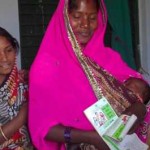Think witch-hunting is a thing of the past? Think again.
"They forced me to eat human faeces and beat my children, calling them ‘children of a witch.’ I had nowhere to escape. They tortured me mercilessly.”
Unfortunately, this horrific narrative is not unheard for the Dalit and Adivasi residents in Jharkhand's hinterland, where witch-hunting is a common practice. According to the National Crime Records Bureau, 2,097 murders were committed between 2000 and 2012, where the motive was "witch hunting". People, mostly women, are targeted and branded witches whenever a calamity befalls the village – be it death, disease or drought. Witch doctors known as Ojhas, mostly men are called upon to undo the supposedly evil influences of a witch. Many a times, victims and survivors of witch hunting are also women suffering from mental illnesses.
Unable to cure or heal people, Ojhas evade responsibility by claiming the existence of a “witch” somewhere in the vicinity. One word from an ojha is enough to turn local residents into a frenzied mob out to seek blood-thirsty vengeance and hunt a ‘witch’, usually a weak, lower-caste woman, and bring her to ‘justice’.
In 2015, five women were brutally murdered after a youth’s untimely death in Jharkhand -- an entire mob of villagers attacked them after an ojha accused them of practising witchcraft and causing his death. The women were jolted awake from their sleep, dragged out of their home and bludgeoned to death. It isn’t just men who victimise them either; women can be just as brutal.
“After the men, the women started hitting the victims who were already dead.”
According to a research conducted by Partners for Law in Development, witch-hunting is rooted in patriarchy, financial disputes, superstition and other personal and social conflict. More often than not, these conflicts arise out of jealousy or conflict and tension between the victim and their relatives, friends or acquaintances.
Given that India has a shortage of 83% specialist medical professionals in community health centres and the levels of education are low in all these areas, people’s belief in ojhas, who serve as medicine-men, is strong. The lack of such infrastructure is partly responsible for the myriad atrocities, including physical and psychological torture, inflicted on vulnerable women across remote regions of the country. The 'punishment' meted out ranges from death to being banished from their homes.
Although witch hunting is practised across 12 states in India, only 7 states have laws criminalising the practice – Jharkhand, Bihar, Chhattisgarh, Maharashtra, Rajasthan and Assam. However, a large number of perpetrators are still let out on bail, and there is no system in place to re-arrest them. “I still see my mother’s murderers roaming freely in front of me. I feel scared while going to school,” says an adolescent girl, whose mother was murdered after being branded a witch. There are no guarantees that the girl will not suffer the same fate as her mother. If the perpetrators escaped a crime once, will the second time be any different?
Jharkhand ranks highest in these crimes against women (and in certain cases, also men and child victims) in which “witchcraft” is the only charge against the victims. Other states such as Chhattisgarh, Rajasthan, Assam and Bihar also report witch-hunting deaths, though under-reported. An analysis of NCRB data between 2010 and 2012 reveals that while there were 77 instances of death, only 9 cases were registered in Jharkhand. The figures also don't take into account other kinds of ‘vengeance’ exacted by a village, like forcing the victim to parade naked in the village square, to eat faeces, banishment and ostracisation; none of these acts of violence warrants a police warrant.
In most cases, the reason is not the only superstition; almost invariably someone who would like to settle a land or financial dispute or with a personal vendetta can settle on witch-hunting as a solution, especially if the victim is from a lower caste. As one victim’s husband states, jealousy can be an important factor contributing to a lynching. While immediate family members usually do protect the victims, they do so at great danger to themselves. Currently, India faces a profound paradox – while on the one hand, the country has developed tremendously, adopting new technologies and modern lifestyles, age-old traditions and rituals still exist, lying open to interpretation and misuse according to the perpetrators’ whims and fancies.
The hope in the story is that while some people are attempting to hunt down “witches” and offer them nothing but pain and distress, others can step forward to stop this 'tradition' forevermore. In a country that looks to the future, how long can we allow such inhuman acts to continue?
Video by Nirmala Ekka, Emilya Hansda and Mukesh Rajak. Article by Sangeeta Rane
See more such videos at www.videovolunteers.org. Take action for a more just global media by sharing their videos and joining in their call for change.
Fixing India| Catching A Human Trafficker| Featuring Navita Devi|
Because of Navita's determination and bravery, a human trafficking agent is being the bars, and the girls have returned to their homes.This is how our CC’s are helping raise issues and finding solutions.
The Woes of Musahar Community
This video shows a Musahar community of Bhadohi District, Uttar Pradesh. They were settled next to a forest, away from the town area, because of their ‘untouchable’ status. Community Correspondent Anil Kumar here reported a heart wrenching story of a young boy picked up by a wolf from the nearby...

